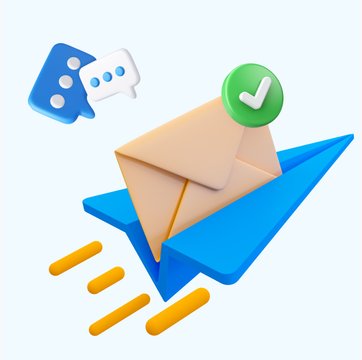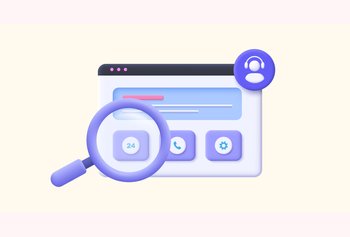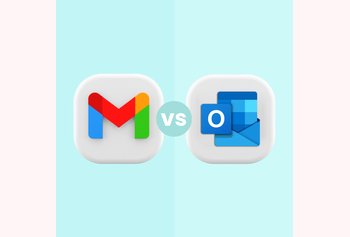119 Email Phrases to Help You Get the Desired Response

Table of contents
Email is undeniably one of the most essential ways of communicating today. Especially when it comes to business interactions, you just can’t do without emails. But here’s the thing – it creates a lot of clutter and cannot account for non-verbal cues.
This is why using the right language and clear, to-the-point phrases are extremely important when you send an email. So that your message is not misunderstood and invokes the right kind of response from your recipient.
In this article, we will explore email phrases that can help you write just the right message to set the context for your next business email—and improve your chances of getting the response you want.
Table of Contents
Starting the email right
How you start your email sets the context for what you say next. Salutations and opening lines depend on your relationship with the recipient, the purpose of your message, and how formal or casual you want to be. Here are some ways to start a business email:
Salutations
1. Hey/Hi/Hello [First Name],
2. Good morning/afternoon/evening [First Name],
It’s always best to do your research and know who you are writing to, but in case you don’t know the name of the recipient, you can start with:
3. Hey there,
4. Dear Sir/Madam,
5.To whom it may concern,
Opening lines
6. I hope this email finds you well.
7. I hope you’re having a great [day of the week]!
8. I hope you had an amazing start to the week.
9.I hope you had a great weekend.
10. Hope you had a restful weekend.
11.So glad to connect with/e-meet you, [First Name]!
12. It was great to meet you at the event/on [day of the week].
13. Hope you are having a two-mugs-of-coffee day instead of a five-mugs one.
Crafting the email body
When working on the body of your email, always make sure that you stay focused on the core message, you can make use of our free ai email generator to draft concise and perfect emails that don’t beat around the bush.
Here are some best practices for crafting an email body to get the desired response:
- Start by introducing the purpose of your email very clearly.
- If there is a lot of information to be conveyed in your email, it’s best to break it down into paragraphs or bullet points. This way, your recipient is not overwhelmed.
- In the case of cold outreach, keep the tone of your email polite and professional, but don’t shy away from adding some fun elements. This will help you stand out from the hundreds of “typical” business emails that your recipient probably receives every day, increasing your chances of getting an email response.
- Ideally, use active voice in your emails, with a clear call to action that does not leave room for ambiguities.
- Finally, before you hit that send button, ensure your message is free from grammatical or spelling errors that might put your recipient off.
Now let’s take a look at some effective email phrases that you can use in your email, depending on what you are looking to convey:
Requests/inquiry emails
We often reach out to our colleagues, partners, vendors, or even customers to help us with some information. Here’s how you can set the context when you’re making requests or inquiries:
14. I am writing to inquire about… [the purpose of the email]
15. It would be immensely helpful if you could help me with…[mention the ask]
16. I would appreciate it if you could provide me with…
17. Could you please help me with…
18. I was wondering if you could…
19. I would like to request you to…
20. Please help me with…
21. I wanted to get some information on…
Responding to an email
Communication is not meant to be one-way. Sometimes, people will write to you first, making a request or wanting to clarify a concern. For such cases, here are some phrases to craft the perfect email response:
22. Thank you for reaching out.
23. I appreciate you taking the time to write to me.
24. Regarding your question/request…
25. I would like to address your concerns…
26. Here is some information on…
27. Please find attached/PFA the documents you requested.
28. Please let me know if you need any further information.
29. Please feel free to reach out in case you have any more questions/concerns.
30. I would be more than happy to answer any other questions you may have.
31. Do let me know if there are any more concerns on your end.
Extending an apology
To err is human. But not extending an apology for when you make mistakes is far from divine. Here are some phrases to extend an apology in a professional email:
32. I apologize for any inconvenience this may have caused.
33. Apologies for the late reply; I was [state the reason behind the delay]
34. I am sorry for any misunderstanding.
35. I understand the inconvenience this may have caused you, and I assure you that I am taking the steps necessary to resolve this issue.
36. Please let me know how I can make this right.
37. I assure you that this will not repeat in the future.
38. I would like to extend my heartfelt apology for…
If you’re working in a customer-facing team, such as customer support or customer success, you may often run into situations where you need to apologize to your customers.

Here’s how you can extend an apology in such cases:
39. I take full responsibility for what happened and assure you that this shall not happen again.
40. I deeply regret and apologize for the trouble you had to go through.
41. I apologize for any inconvenience caused and want to assure you that we are actively working to address the issue you’ve raised.
42. We deeply regret the negative experience you had with our product/service, and we are committed to making it right.
43. I apologize for any delays in resolving the matter. Rest assured, we are taking immediate action to rectify the situation and prevent any recurrence in the future.
44. As a token of our apology, we would like to offer you [compensation/offering/alternative solution] to help make up for the inconvenience caused.
When you are dealing with a particularly angry customer, keep these things in mind to resolve the complaint effectively and build a good rapport with the customer.
Recommended Read
10 Email Templates for your Customer Support team
Follow-up/reminder emails
At times, people might be busy or might have missed your email, especially when it’s a cold outreach. Follow up emails are generally shorter than your initial emails. Here are some email phrases to remind them:
45. I wanted to touch base with you…
46. Just a friendly reminder that…
47. I wanted to follow up on our previous conversation about…
48. I understand you must be keeping busy, but I wanted to check in with you about…
49. I wanted to quickly check if you got a chance to look into…
50. Just wanted to remind you that the deadline for [task] is close, and it would be great if you could…
51. I wanted to circle back to our last conversation…
52. Just wanted to check if there are any updates on…
53. Would you please help me with the information I requested in my previous email?
54. Did you get a chance to check my last email?
Setting up a meeting
Sometimes, email exchanges don’t suffice — you need to meet them over a video call or even in person to discuss things at length. Here are some email phrases to help you set up a meeting:
55. Can we set some time aside this [week day] to discuss…
56. I would love to connect with you over a call and understand…
57. Would it be possible to arrange a meeting to…
58. Can I block some time on your calendar this [weekday] to…
59. Would you have half an hour on [day and date] to discuss this further?
60. Let’s set up some time to discuss/brainstorm…
61. I believe it would be best to get on a call and discuss…
62. Please let me know your availability for a call…
Conveying confidentiality of the information shared
When you share certain documents or information solely meant for the eyes of the receiver, it’s important to convey that it’s confidential. Here’s how you can professionally convey the confidentiality of the information shared:
63. Please treat the information shared as confidential.
64. The documents attached to the email are only for your reference.
65. Just wanted to let you know that the information shared here is sensitive, so please keep this between us.
66. Please ensure that the information shared here remains confidential and is not shared with anyone else.
67. I’m sharing some confidential information in this email, so please treat it as such.
68. Just a heads up that the documents I am attaching to this email are strictly confidential.
69. Please keep in mind that this information is sensitive, so kindly keep this confidential for now.
Setting expectations
Sometimes you might want to set some expectations when, for instance, you’re working on a project. To ensure all the stakeholders involved are on the same page and there are no surprises, use these email phrases:
70. To set clear expectations, I wanted to outline the following: [followed by bullet points on what you wish to convey]
71. Just so we are both on the same page, I wanted to highlight that…
72. I wanted to highlight the following so that we are clear on the expectations and the deadlines of the project:
73. I wanted to highlight the following so that we can both refer to it in the future: [followed by bullet points on what you wish to convey]
74. To avoid any misunderstandings, I wanted to give a quick rundown of what we have discussed so far: [followed by bullet points on what you wish to convey]
Sending attachments
Attaching documents to emails is a common practice — be it for review, reference, or exchange of information. Here are some email phrases to ensure that your recipient doesn’t miss your attachments:
75. Please find attached [document] for your review.
76. As per our last discussion, I am attaching [document] for your reference.
77. As requested, I have attached [document] for you to refer to.
78. Please take a look at the attachment at your earliest convenience.
79. PFA [document] to this email, and let me know if you have any questions.
80. For your convenience, I have attached [document] to this email.
81. Kindly take a look at the attached documents for more details.
82. I have attached the required/requested documents for your records.
83. PFA the documents for your perusal, and let me know if there is anything else you need from my end.
Building rapport with the recipient
Building a good rapport with your recipient is of utmost importance. Be it your client, colleague, customer, or vendor – it’s important to thank them and show gratitude when necessary. Good communication results in better rapport. Here are some email phrases to build a good relationship over professional emails:
84. I appreciate your continued support and collaboration in this project.
85. I’d be more than happy to answer any questions you may have.
86. Thank you for all your valuable time and feedback so far.
87. I wanted to take a moment and extend my gratitude for the insights you have shared with me.
88. It’s great to have your continued enthusiasm and prompt feedback. We wouldn’t be here without you.
89. I wanted to thank you for all your hard work and support. It’s been a pleasure working with you.
Breaking bad news
Breaking bad news is never a cakewalk. If the bad news is conveyed in a cold or abrupt manner, it can hurt the recipient and damage your relationship with them. When you are trying to craft an email that can convey bad news with empathy, use these email phrases:
90. I am sorry to inform you that…
91. Unfortunately, I have some bad news to share with you…
92. I deeply regret to inform you that…
93. I understand that this may be difficult to hear, but…
94. I am afraid I have some bad news to deliver…
95. I am sorry to have to share this news with you, but I assure you that I am here to help in any way possible.
96. This may not be the best news to hear, but I wanted to let you know as soon as I could…
97. Please know that I will do my best to help you in any way possible in this situation.
Canceling contracts or vendor subscriptions
If you are writing an email to notify a vendor or a company to terminate your ongoing subscription or contract with them, here are some email phrases you can use:
98. I regret to inform you that we are canceling our contract/vendor subscription with [Company Name], effective from [desired cancellation date].
99. Kindly proceed with the cancellation of our contract/vendor subscription with [Company Name] as of [desired cancellation date].
100. Requesting the termination of our contract/vendor subscription with [Company Name], effective from [desired cancellation date].
101. This email serves as our official notice to cancel the contract/vendor subscription with [Company Name], effective from [desired cancellation date].
102. As per our previous communication, kindly proceed with the cancellation of our contract/vendor subscription with [Company Name] from [desired cancellation date].
End your email on the right note
Closing lines and sign-offs are equally important as the content in the body of your email. They convey your final gratitude and professionalism to your recipient. As they say, “All’s well that ends well.”
It is important to consider the level of formality when deciding how to conclude your email. For instance, when you are writing to a colleague or stakeholder with whom you have an established relationship, you might just end your email with phrases like:
103. Cheers
104. See you soon
105. Have a good one
106. Best
107. Until next time
But with those you are writing to for the first time or have a formal business relationship with, you would want to convey a clear sense of respect and go with phrases like:
108. Yours sincerely
109. Regards
110. With gratitude
111. Thanks again
112. All my best
Before you sign off, make sure that you leave the door open for them to write back to you in case they need any assistance from your end, and express your gratitude with phrases like:
113. Thank you for your attention to this matter.
114. I look forward to hearing back from you.
115. Please let me know if you have any further questions or concerns.
116. I appreciate your time and consideration.
117. If you need further assistance, please don’t hesitate to reach out.
118. I hope this information proves useful to you.
119. Once again, thank you for your support and cooperation. I look forward to our continued partnership.
Conclusion
Effective email communication is critical for developing strong relationships and achieving success in both personal and professional contexts. How you use email phrases can make or break how your message is received and understood by the recipient.
You can set expectations, create rapport, convey confidential information, and send reminder emails effectively using the email phrases shared in this article. For instance, if you write complaints and want your money back, you must be convincing and reasonable but not rude.
You must be formal and respectful when writing a business email. And if you write to a friend or good acquaintance, you can be personal but still respect their time. If you write a digital newsletter, you have to be creative, know your audience very well and think of something that would impress and bring you sales.
Remember to tailor your email response to the recipient, communicate clearly and concisely, and aim for an open and respectful dialogue.

































